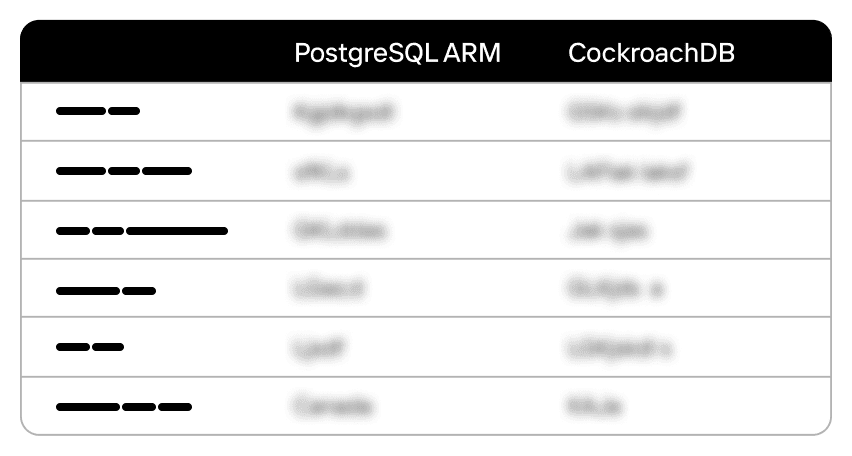Performance Testing of the Transaction Processing System
Our client is a big commercial bank and a leader in the consumer credit market. It has a presence in more than 2,000 cities, with more than 31.6 million customers.
To automate the back office for retail customer service, which supports retail transactions, personal accounts, and payments, the bank uses TranzWare CMS (a Compass Plus product). The front-end solution, which is needed to manage terminal devices, route and authenticate transactions, and communicate with payment systems and third-party authorization hosts, runs on TranzWare Online.
Challenge
Our customer decided to implement its own transaction processing. This significantly simplifies business processes and reduces costs when using external processing centers.
In connection with the planned migration to an in-house processing system, bank specialists identified risks associated with the performance and fault tolerance of the IT infrastructure, TranzWare CMS, and TranzWare Online, namely:
As part of its mitigation of these risks, the bank decided to conduct benchmark tests to compare the performance of the TranzWare CMS and TranzWare Online systems before and after the introduction of changes to the in-house processing system. PFLB was hired to conduct performance testing.
Solution
PFLB proposed to focus on testing the performance of two system behavior profiles: “business day” and “day-end closing”.
Analyzing the operational statistics of the live system revealed the primary sources of the load: business-user transactions and background processes being per- formed on a schedule. An analysis of the integrated communications helped determine the nature of the interaction with external systems and served as the basis for adding additional operations to the profiles.
A series of tests were run on the “old” configuration. Then the same series of tests were run on the “new” architecture, which was already using the bank’s in-house processing system. This make it possible to compare the performance of the two configurations on a load representative of real operating conditions.
As the tests were run, PFLB specialists monitored the IT systems’ performance characteristics under load. Parameters were changed at the level of system resources (CPU, Memory, I/O), databases and middleware, applications (code profiling), and business processes (operation response times).
Based on the systems analysis, PFLB’s performance engineers discovered several bottlenecks.
Customer Benefits
The testing revealed that the switch to the in-house processing system was degrading the performance of the front-end’s TranzWare Online system. Its throughput plummeted to less than one fourth of what it had been.
PFLB’s performance engineers located the bottleneck causing this degradation. It turned out to be the CBA interface responsible for TranzWare Online’s communication with one of the banking systems. During the testing, a backlog in the CBA interface’s message queue resulted in degraded performance for all types of transactions.
Moreover, the engineers found potential problems due to single-threaded processing of the one banking system transactions on the TWO application server, as well as several functional bugs. The findings presented by PFLB at the end of the project helped the bank decide to postpone deployment outfits in-house processing system by 3 months, during which time the bottleneck was fixed by a developer. After all of the bugs were eliminated and the load testing was repeated, the in-house processing system was successfully introduced.
Related insights in case studies
Benchmark Testing Case Study: How PFLB Validated Chainguard Docker Container Performance

Chainguard specializes in providing highly secure Docker container images — regularly updated, tightly managed, and designed to minimize vulnerabilities. While their reputation for security is well-established, Chainguard wanted to ensure their containers also delivered competitive performance. After all, strong security is crucial, but it shouldn’t slow you down. Client Goal Chainguard needed clear, objective proof […]
From Weeks to Hours: Accelerating Data Masking and Enabling Easy B2B Data Sharing for a Leading Bank

A leading bank, ranked among the top 20 in its market, provides services to millions of customers daily. Staying at the forefront of this competitive market requires not only stable and updated infrastructure but also rapid feature delivery to maintain the highest service quality. Challenge The bank faced a critical challenge in enabling safe sharing […]
Leading Oil & Gas Innovator, NOV Excels with Real-Time Drilling Data After Load Testing

NOV, a renowned global provider of equipment, components, and IT products for the oil and gas industry, which is located in Texas, USA, empowers extraction companies worldwide with innovative technological solutions that enable the safe and efficient production of abundant energy while minimizing environmental impact. Under its CTES brand, NOV offers a range of IT […]
From Hundreds to Thousands: Scaling MEFA Pathway Software for Mass Student Registration

FolderWave, Inc. is a leading digital services provider in the Massachusetts e-learning sector. It aids millions of students in researching and planning a job-oriented education. The company delivers IT solutions, platforms, and services in partnership with notable non-profit organizations like MEFA Pathway and College Board, which connect a vast network of colleges, schools, and universities […]
Be the first one to know
We’ll send you a monthly e-mail with all the useful insights that we will have found and analyzed
People love to read
Explore the most popular articles we’ve written so far
